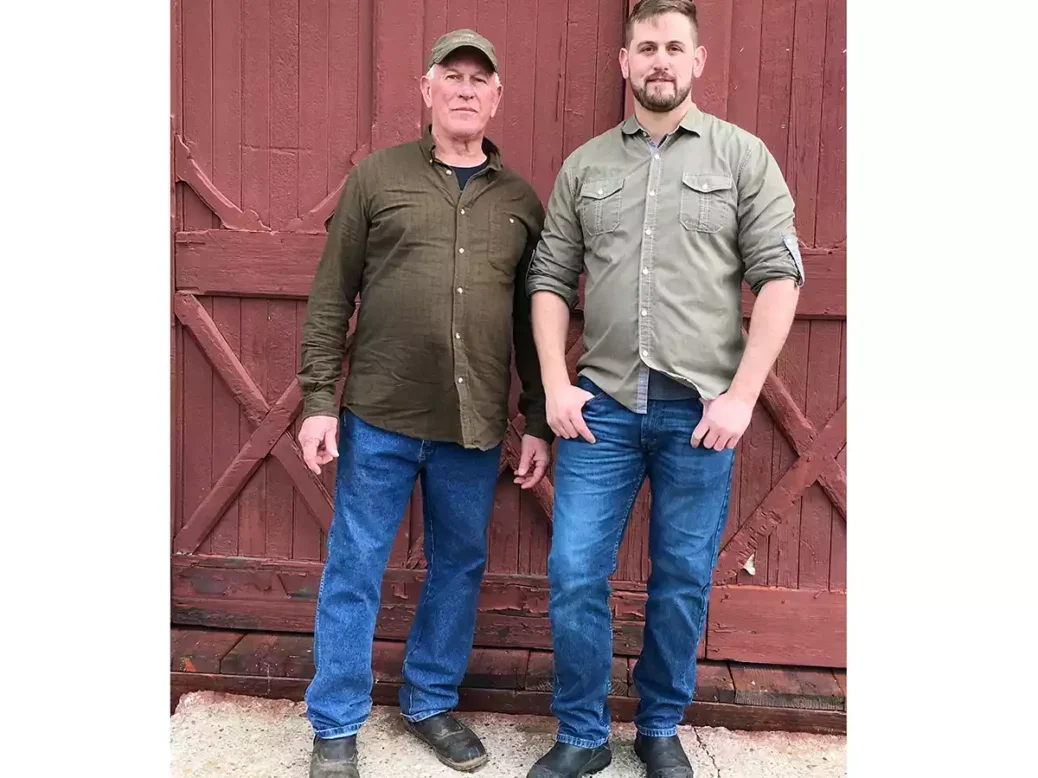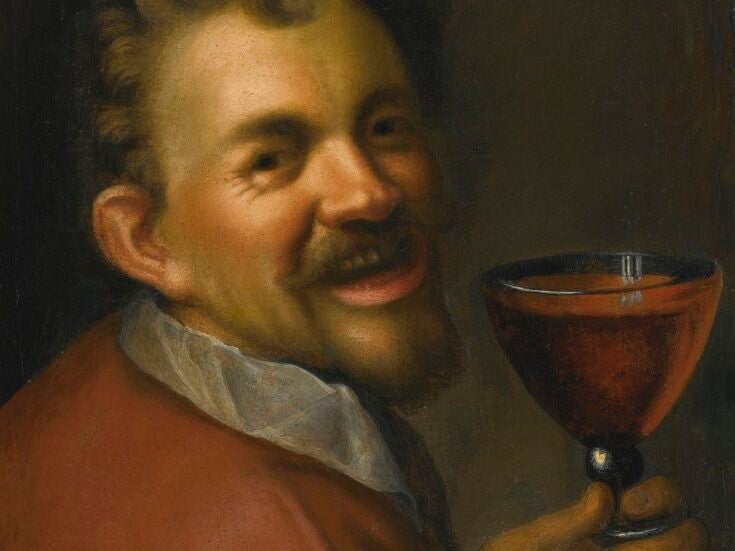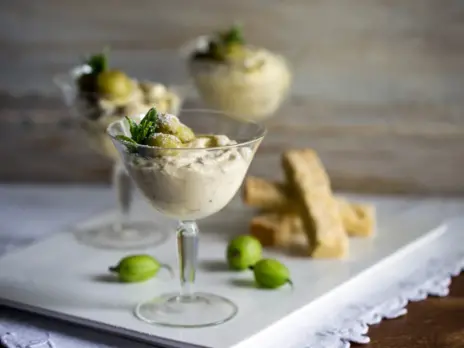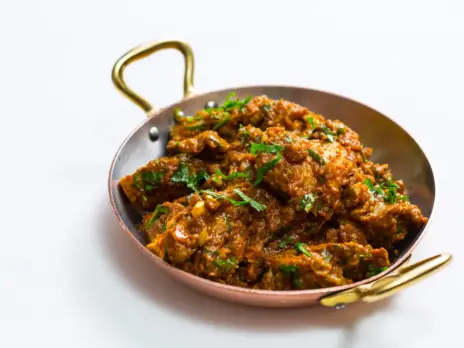
Fred Peterson tells Margaret Rand about his path from the US Navy to being a part-time fireman and Dry Creek Valley fine winemaker.
Would it be terribly rude, Fred, to describe you as the poor man’s Ridge?
The thing about Fred Peterson is that even if you’ve only met him briefly before, you can ask him things like this. Some people are full of amour-propre; Fred doesn’t seem to be. “That’s not terribly unfair,” he replied. “I have great admiration for Ridge, and I had the privilege of working for Paul Draper for many years.”
Fred Peterson has in fact worked for quite a few people in California, always managing vineyards or making wine; he didn’t set up his own winery until 1995. And even then, you get the impression that it was a bit accidental. “I just wanted to make wine,” he says of his career. “I was never concerned about having my name on the door.” He’s stubborn, too. He describes himself as “transparent; what you see is what you get. I’m a terrible liar. My best friend is my brother Mike; I never knew what I wanted to do, but he wanted to be a cop. He can lie with the right face; it’s a gift I never had, but I don’t regret it.”
It’s all been a bit accidental, actually, Fred’s life. He seems never to have had a driving vision, though he says he is driven—“in a weird way. What the fuck is success? But fear of failure is a big thing.”
He now makes Zinfandel from Dry Creek Valley that is deep and complex, savory and subtle, and reminiscent of Ridge. And rather like Ridge, it has an admixture of other grapes: Petite Sirah, Carignan, Grenache. “We always blend a bit of Carignan in Zinfandel.” Those last three, plus Syrah, go into Mendo Blendo from Redwood Valley, and from the same Tollini Vineyard comes Zero Manipulation, which is Carignan, Grenache, and Syrah. There are other wines, too, from Bradford Mountain Vineyard, including a White Blend of Vermentino, Vernaccia, and Verdelho. Oh, and in his spare time he used to be a fireman.
His father also worked for the San Francisco Fire Department, and Fred grew up in South San Francisco, an area that Fred describes as “meatpacking, steel; very industrial. Now it’s high-tech. But it was a great place to grow up, and you could hike to the ocean.
“When I was younger, I never considered being a firefighter. But at UC Davis they formed a firefighting crew and I needed to make money one summer, so I became a part of that crew.” That was in the summers of 1976 and 1977, both drought years, and he really enjoyed it. So, in early 1987 he joined the Geyserville Fire Protection District as a volunteer, partly to do something for the community and partly to get himself out of his comfort zone of grapes and wine. He’d enjoyed the camaraderie of the navy, too; but of course, firefighting wasn’t all fun. There were suicides to deal with, car crashes, things that he couldn’t forget. But he loved the teamwork, the physicality.
Join the navy, see the vineyard
But already we’re going too far ahead. The US Navy? UC Davis?
Okay, the navy. This was the era of the Vietnam War, which Fred was against; he protested and said he was a conscientious objector, “which drove my father crazy. He said I was a coward, and it stung.” To prove he wasn’t, he enlisted in the navy as a hospital foreman, which meant going with the military to Vietnam but not carrying a weapon. “I didn’t want to get shot at in a war I didn’t believe in.” But “I scored high in tests, and I was going to be sent to Intelligence, until Intelligence interviewed me and learned of my politics.” So, he went to radio school instead and was posted to a communications station in Guam, then to an ammunitions ship that was being decommissioned, and then to a supply ship. “It was quite cool.” The ship was USS Regulus, and it ran aground in Hong Kong in a typhoon (nothing to do with Fred, I should add), which meant three extra weeks in Hong Kong. “I’m not that bright, but I’m really lucky.”
Back in the US, Fred spent his final six months on a large tugboat in Pearl Harbor, towing targets for target practice three days a week, with the rest of the week off, then a stint in the Aleutian Islands in Alaska. Then he planned to go UC Santa Cruz, with a major in pre-med. In devout Sicilian Catholic families like that of his mother, he says, you can become a priest or a doctor, and he was not going to be a priest. Not that he wanted to be a doctor either. Actually, the attraction of UC Santa Cruz was girls, rugby, and scuba diving, he says.
Eventually, he decided he wanted to do something in agriculture. “A buddy had a motorcycle, and I went with him to Iowa, to the farm of a friend. It was the first time I’d driven a tractor or hoed beet. So, I wanted to do agriculture. An adviser at UC said, ‘Take time off and consider what you want to do, and then come back.’” But what to do? A friend said he could work on his family vineyard, and there was an agricultural program at Mendocino Junior College.
And he reconnected with wine. “Reconnected” because Fred’s mother’s Sicilian roots meant there had always been wine on the dinner table, but quality wasn’t really a consideration. “So, in a peculiar way I have to thank the navy for connecting me to good wine.”
Back in Santa Cruz, he worked at Bargetto Winery, and because he didn’t have a car, he used to hitchhike. One Saturday, a Lambretta stopped for him; “I didn’t know it was a woman; she was six foot tall and wearing a helmet.” She was called Martha, and they later married.
The plan now was to study enology. But before that came Australia and New Zealand—Fred had been due to go there on a navy ship, but that hadn’t happened; he had some money saved and decided to do it. “I’d met Randy Weaver at Bargetto, and I looked him up in New Zealand. It was the first day of harvest, and he was quite preoccupied, but he had time for dinner. Corbans was also starting the harvest, and I went there and wandered by the crush and saw somebody had left something open; I shut it, and landed myself a job as night-shift supervisor.” (This was in 1975, in case you’ve lost track. Fred doesn’t tell linear stories; they loop backward and forward, sideways, up and down. I’ve tried to make them just a bit more linear.) He’d also met Max Lake at Bargetto, who’d said to look him up, so he did. They had dinner, and Max opened a 1927 Rutherglen Muscat; it was quite a trip.
So: UC, this time at Davis. Fred got his degree in June 1978 and became a vineyard supervisor for Paul Masson Vineyards in Monterey County. “After a couple of years, I decided I couldn’t work in a place where I didn’t like the wines.” A call from a friend rescued him: Mount Eden Vineyards in the Santa Cruz Mountains needed a vineyard manager and assistant winemaker; Dick Graff hired him, and off they went—he and Martha—to Mount Eden. They had two sons, Ben and Jamie, “the unplanned child.”
“I liked Mount Eden. I started replanting vineyards. The winemaker was sacked after a while, and Dick said, ‘Would you like to work under me as a winemaker?’ I said sure. I might still be there had Martin Ray, who founded Mount Eden, not needed money to expand. He had a scheme to have partners and build another winery. He’d created Mount Eden, and he chose partners on the principle of divide and conquer. They couldn’t get along. They sued Martin Ray—they got along that much.”
A buyer had to be found. “Chalone had recently started up and thought Mount Eden could be part of it, so they found a favorable buyer. But the main shareholder had financial hiccups and sold stock, and the other shareholders hated Dick Graff and Chalone.” The fall-out was that Bill Hambrecht, an investment banker who had fingers in a great many California-wine pies, formed Hambrecht & Peterson Vineyards, which consisted of 160 acres (65ha) on Bradford Mountain. Fred says, “I talked him into buying in Anderson Valley as well, and by the early 1990s I was managing 680 acres [275ha] on 2,000 acres [800ha] of land up in the hills.” He was also managing Monte Bello for Ridge, and consulting, and raising three children; by now, Emily had joined Ben and Jamie.
But in 1986 his marriage broke up. “Martha decided she was over me. Left to my own devices, I wouldn’t have had children; I was very self-absorbed. Now I’m paying for the sins of being a neglectful father by being a grandfather.”
But there was a woman called Kathleen working at Chez Panisse, and her son was between Ben and Jamie in age, and they became friends; and then her marriage broke up. “I would plan my trips to Monte Bello when she was working at Chez Panisse. She’d feed me in the kitchen, and there were incredible glasses of Burgundy and Bordeaux. It was a great time.”
Fred Peterson: A fascination with wine places and people
Peterson Vineyards started in 1987 in the red barn on Lytton Springs Road at Norton Ranch Vineyard, but it was a slow start; a hobby, really, making small-batch wines that Bill Hambrecht gave away to clients. The labels said, hambrecht vineyards, picked and bottled by peterson winery. “I said after a bit, what if I sell enough to cover costs? So, I went out selling.” That was 1993/94. Fred converted a tractor shed at the red barn, “but the building was falling down around us.” In 1995, Ridge Vineyards bought Norton Ranch from Bill Hambrecht and renamed it Lytton Springs Vineyard West. So, Ridge became Fred’s landlord and also hired him to be consulting vineyard manager.
Otherwise, Fred divested himself of outside management and development projects to focus on his own winery; its official launch was in January 1995, when Bill Hambrecht said to Fred, “If you think so much of your little winery, I’ll sell it to you.” (It’s a convoluted story. I hope you’re still following.)
The children joined the business: Jamie in 2002 as assistant winemaker, and he now runs the business; Emily, too, though “she decided she wanted children and now lives in Washington State.” In 2006, the winery moved to where it is now, at Timber Crest Farms, farther up Dry Creek Valley. “I could have given my son a raise, but I gave him the title of winemaker. He’s a whizz for cleanliness and topping-up, and it allows me to travel and focus on the vineyard. I gave myself a promotion from the winery […]. I don’t see myself retiring, but I want to get it to a point where I can hand it on. The kids will share the vineyard, which is worth more, and Jamie will take over the winery.”
Once again, it was all a bit accidental. “If a Harvard MBA had done a business plan for a winery of our size,” he says, “it might make four wines, not 20.” But the fun, clearly, is in making such different wines from such different blocks. It’s the process that attracts him most. “I got into the business because of the fascination of the places that wine comes from and the people who make it. I love winemaking, but to me the vineyard is where the magic happens. I like the fact that it’s out of my control; I like not being in control of everything. One of the differences between Jamie and me is that he’s organized, and I’m not.
“California’s gift to the wine community is the technology to make good wine, but very few in California want to produce good wine at affordable prices […]. I have two rules of wine pricing. One is, Would I be willing to pay that for a bottle of my own wine? If it’s more than $50, my hand starts to shake. Two: Would I want to hang out with the people who— I appreciate great wine. But wine is not great art. It’s artisanal. It’s meant to be shared. You could cultivate big critics, but what’s the fucking point if you don’t appreciate what you do? I never got more than 89 from Robert Parker. I saw what I needed to do to get 90, and I didn’t want to do it. ‘Competent but uninspired winemaking,’ is what Parker said. I knew what I could have done. I don’t want to sound like Mr Integrity, but I have to be able to look at myself in the mirror.”
Fred mentioned fear of failure earlier; has he ever felt a failure? “I felt the failure of my first marriage. But I like to think I learn. I would have left myself, too. Kathleen won’t tolerate my bullshit, and I’ve matured a lot.” He says he’s intuitive rather than analytical, especially about vineyards. “What I’ve learned, I’ve learned by observation. It’s hard to define balance in a vineyard, but I know it when I see it. Like pornography, as the US judge said.” Money was not a motivation, however. “I never had a great scheme. If I’d wanted to be financially successful, I would have had to make wine for critics and be more strategic. Perhaps I could have made more money and had more fame, but I have no regrets. It’s not that I’m some kind of poet or dreamer, but I love the search for expression.”
Oh, and Fred Peterson is still a director of the Northern Sonoma County Fire District. Firefighting as a metaphor for life? Maybe.






